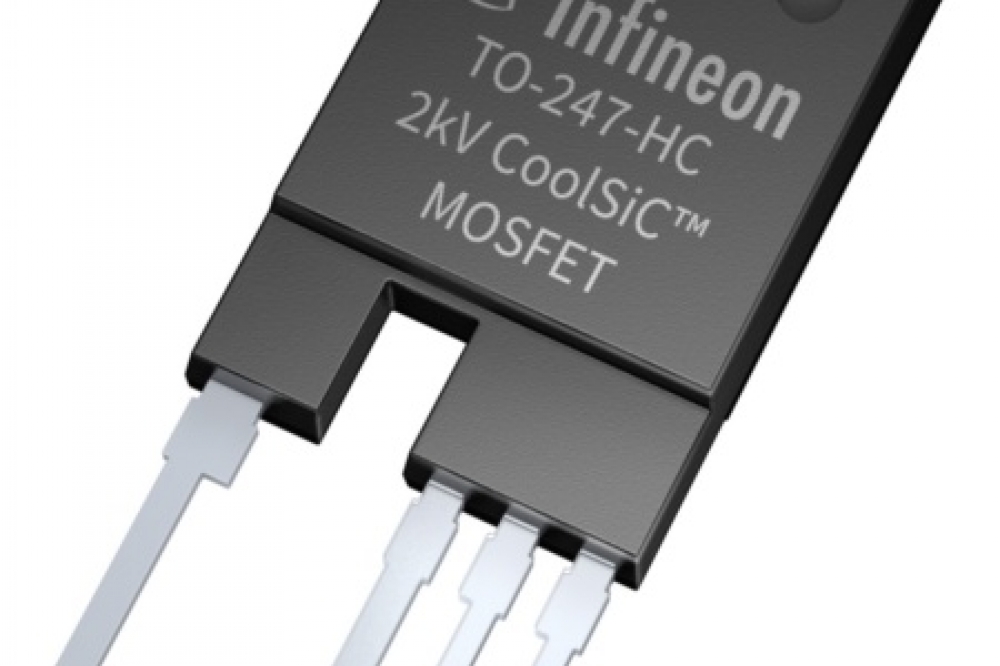Infineon expands CoolSiC portfolio

2 kV voltage class to enable simple, high-power density solutions for 1500 VDC applications
Infineon Technologies has introduced its expanded CoolSiC portfolio with high-voltage solutions to provide the foundation for next-generation photovoltaic, EV charging and energy storage systems.
The extended CoolSiC portfolio offers 2 kV SiC MOSFETs, along with a 2kV SiC diode for applications up to 1500 V DC. The new SiC MOSFET combines both low-switching losses and high-blocking voltage in one device that can optimally meet the requirements of 1500 V DC systems. The new 2 kV CoolSiC technology offers a low drain-source on resistance (R DS(on)) value. In addition, the rugged body diode is suitable for hard switching. The technology enables sufficient overvoltage margin and offers ten times lower FIT rate caused by cosmic ray, compared to 1700 V SiC MOSFETs. Furthermore, the extended gate voltage operating range makes the devices easy to use.
This new SiC MOSFET chip is based on Infineon’s SiC MOSFET technology named M1H which has recently been introduced. The latest advancements enable a significantly larger gate voltage window that improves the on-resistance for a given die size. Simultaneously, the larger gate voltage window provides a high robustness against driver- and layout-related voltage peaks at the gate, without any restrictions even at high switching frequencies. Infineon offers a range of EiceDRIVER gate drivers with functional isolation of up to 2.3 kV to support the 2 kV SiC MOSFETs.
Samples of the 2 kV CoolSiC MOSFETs are available now in EasyPACK 3B and 62mm modules, and later in a new high-voltage discrete TO247-PLUS package. In addition, Infineon offers a design-in eco-system with a 2.3 kV isolation-capable EiceDRIVER. The start of production of the Easy 3B (DF4-19MR20W3M1HF_B11), a power module with 4 boost circuits that acts as the MPPT stage of a 1500 V PV string inverter, is planned for Q3 2022, with the 62mm module in half-bridge configuration (3, 4, 6 mΩ) to follow in Q4 2022. The discrete devices using the latest .XT interconnection technology will be available by the end of 2022.



































